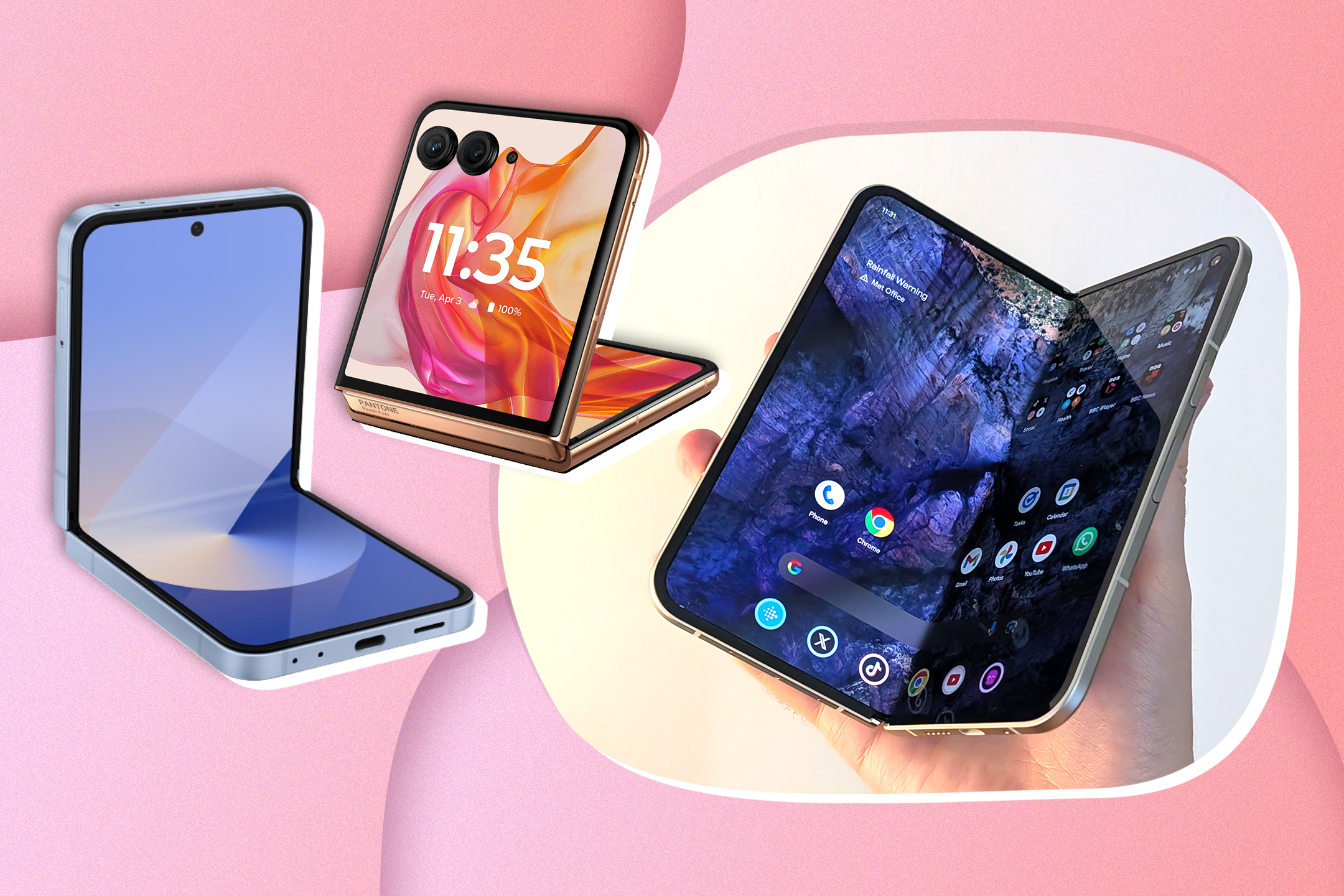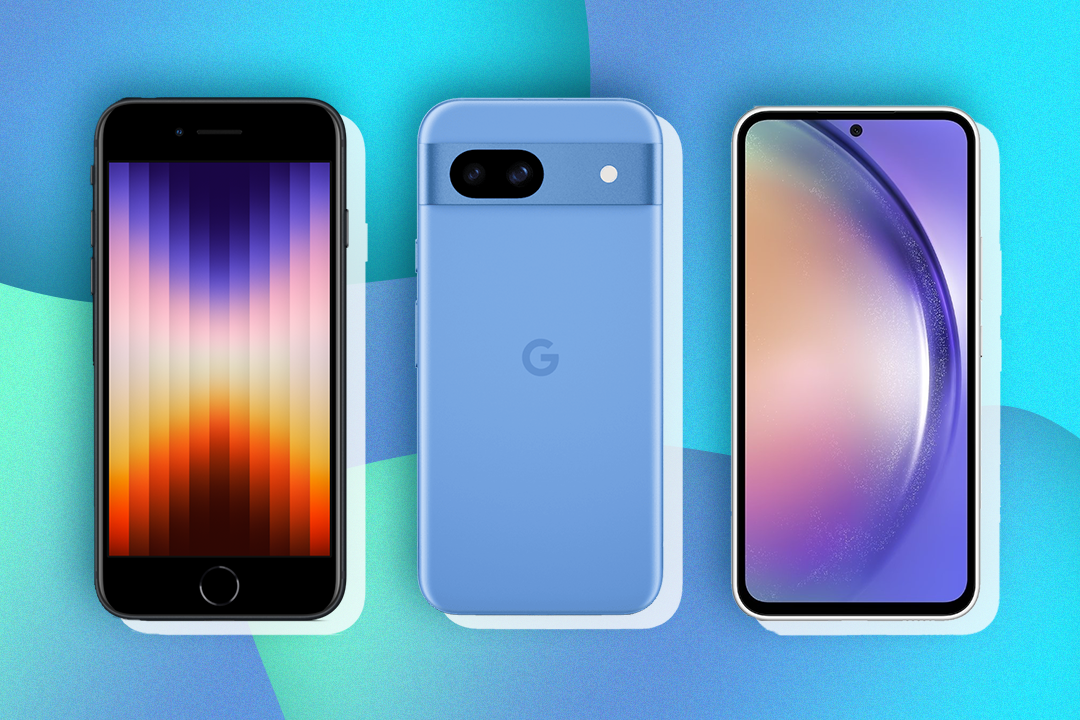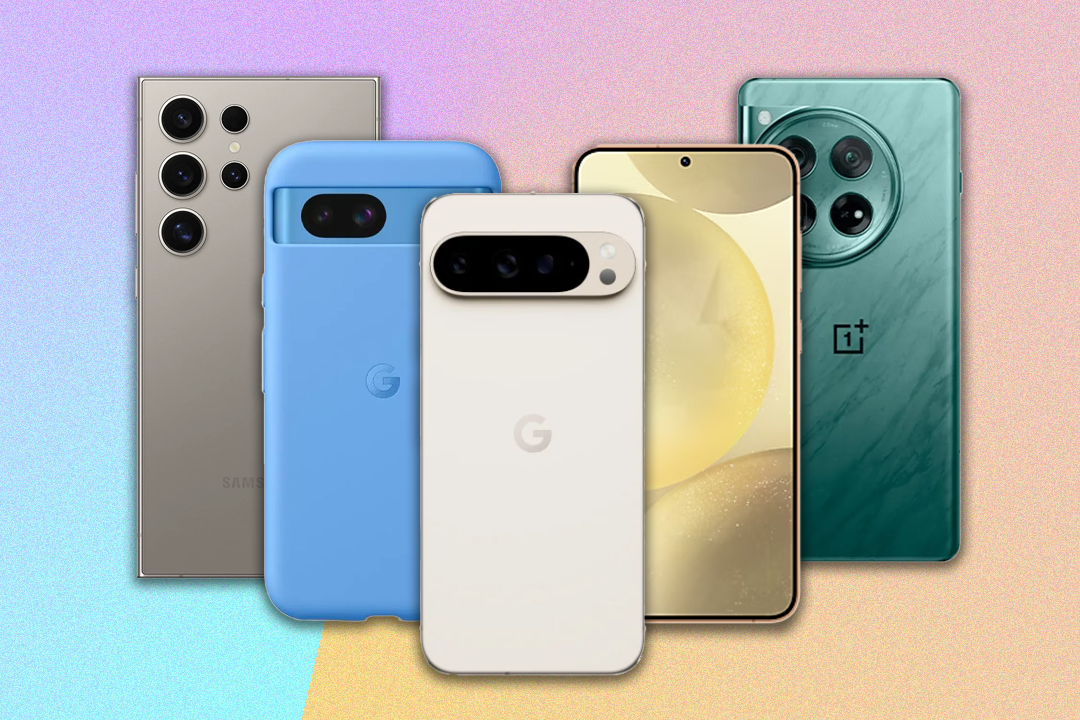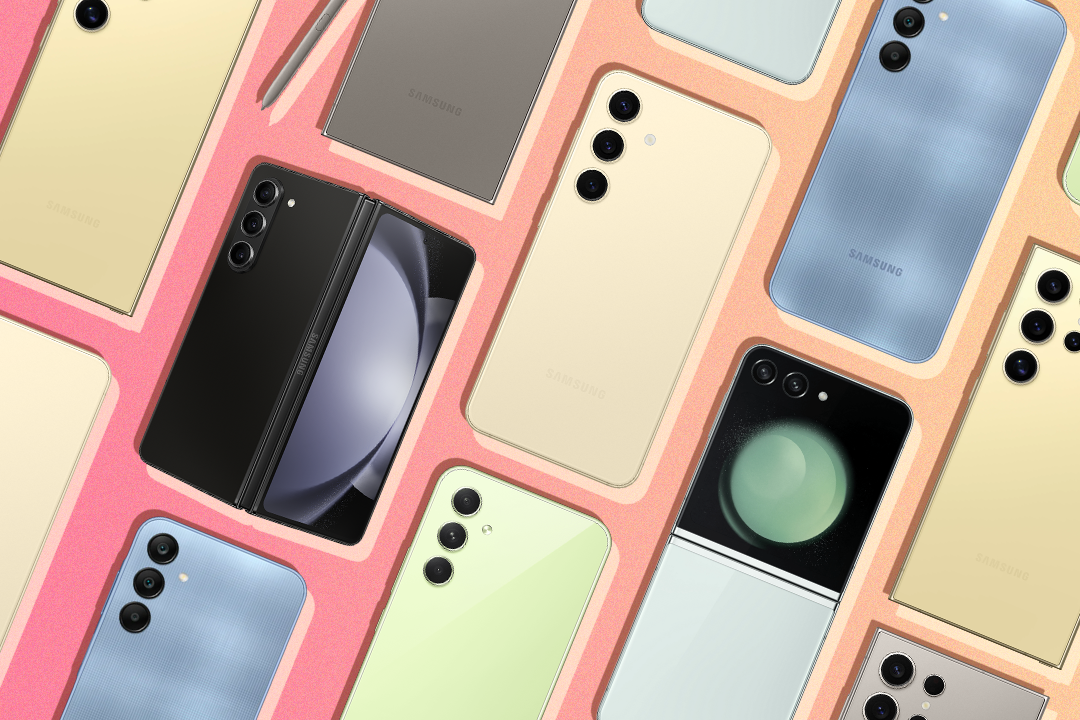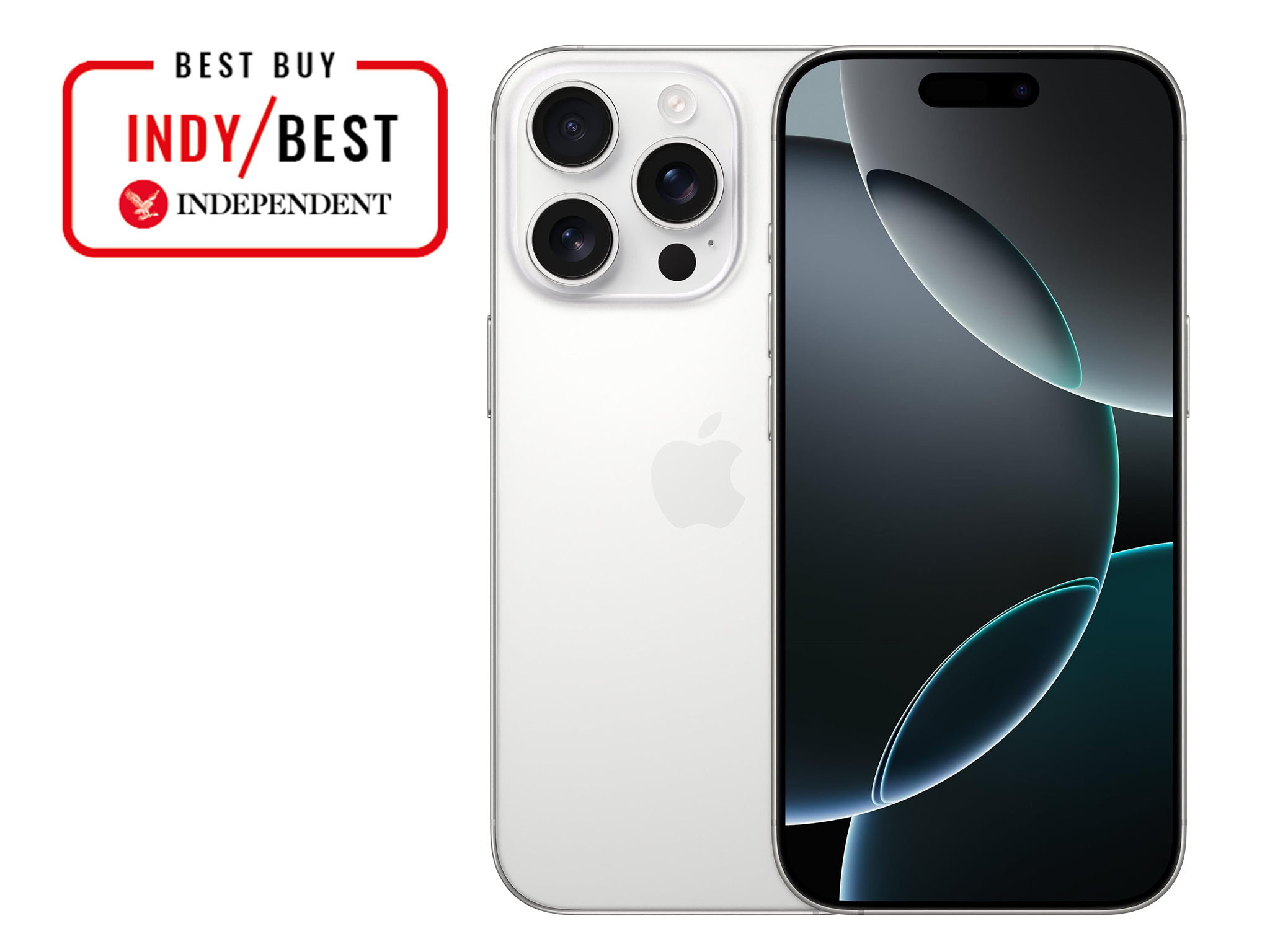
The Independent's journalism is supported by our readers. When you purchase through links on our site, we may earn commission. Why trust us?
Best phones in 2024: Top Android and iPhone mobiles reviewed
Looking to upgrade your smartphone? These are the top models to consider in 2024
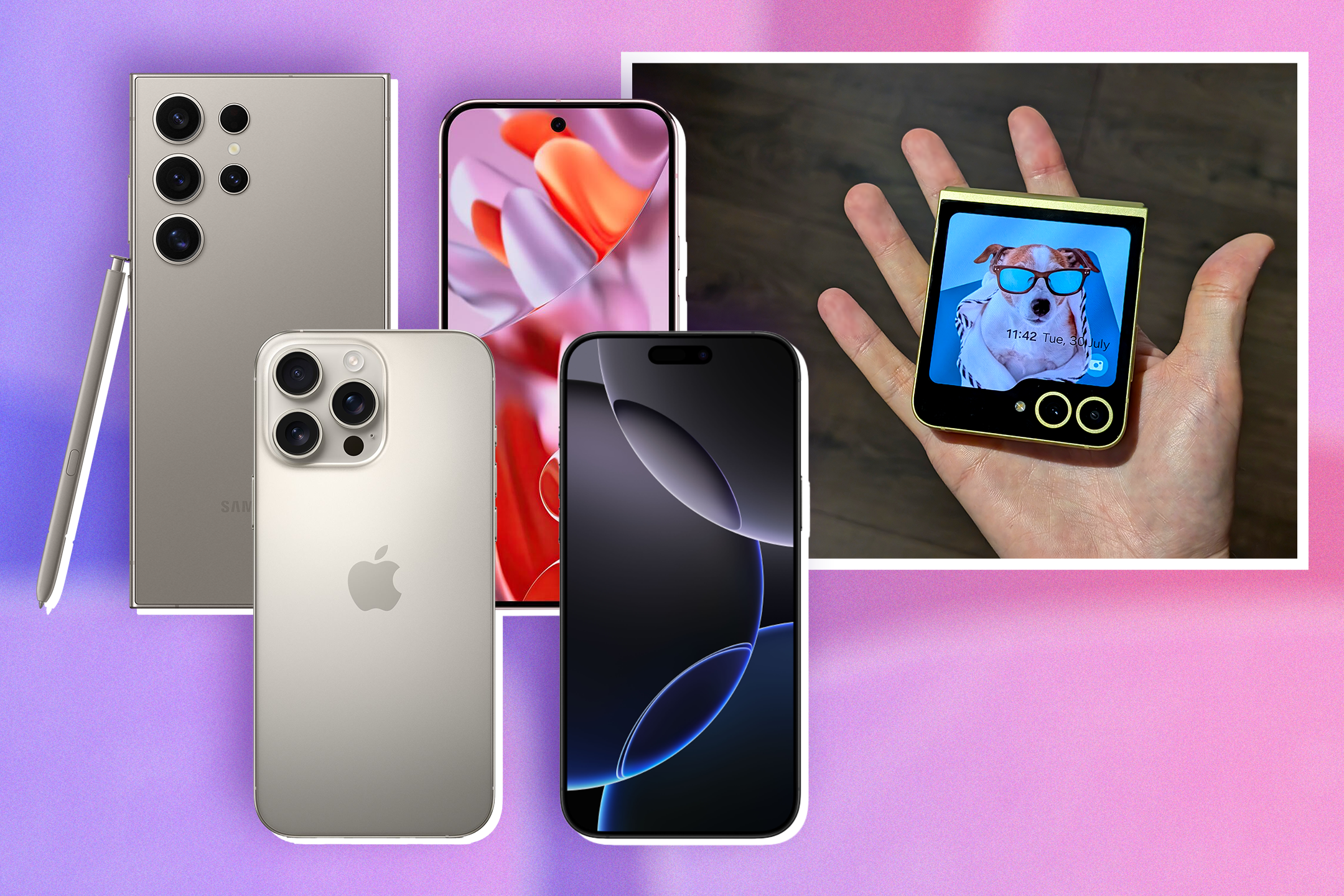
The best smartphone is one that does everything you need it to. Whether you’re a keen photographer who wants a cutting-edge camera in your pocket, or you’re looking for a cheap Android that will stay fast and secure for years, you’ve got a wider choice than ever when it comes to choosing the right phone.
Over the years, smartphones have changed in lots of ways – getting bigger, offering full-screen design, wireless charging, contactless payments, DSLR-rivalling photography, banking services and instant access to music and video streaming. As more features are added, your phone has become the most essential piece of tech you use every day.
What are your priorities? A display that’s big and sharp enough to stream movies in pristine quality, so that you don’t need a separate tablet? A phone with a processor fast enough that it can optimise your photos instantly, taking great shots even in low light? Or a phone that works seamlessly with your laptop and desktop computer? Whatever the case may be, we’ve tested top models to suit different needs and help you find the best phone for you.
How we tested
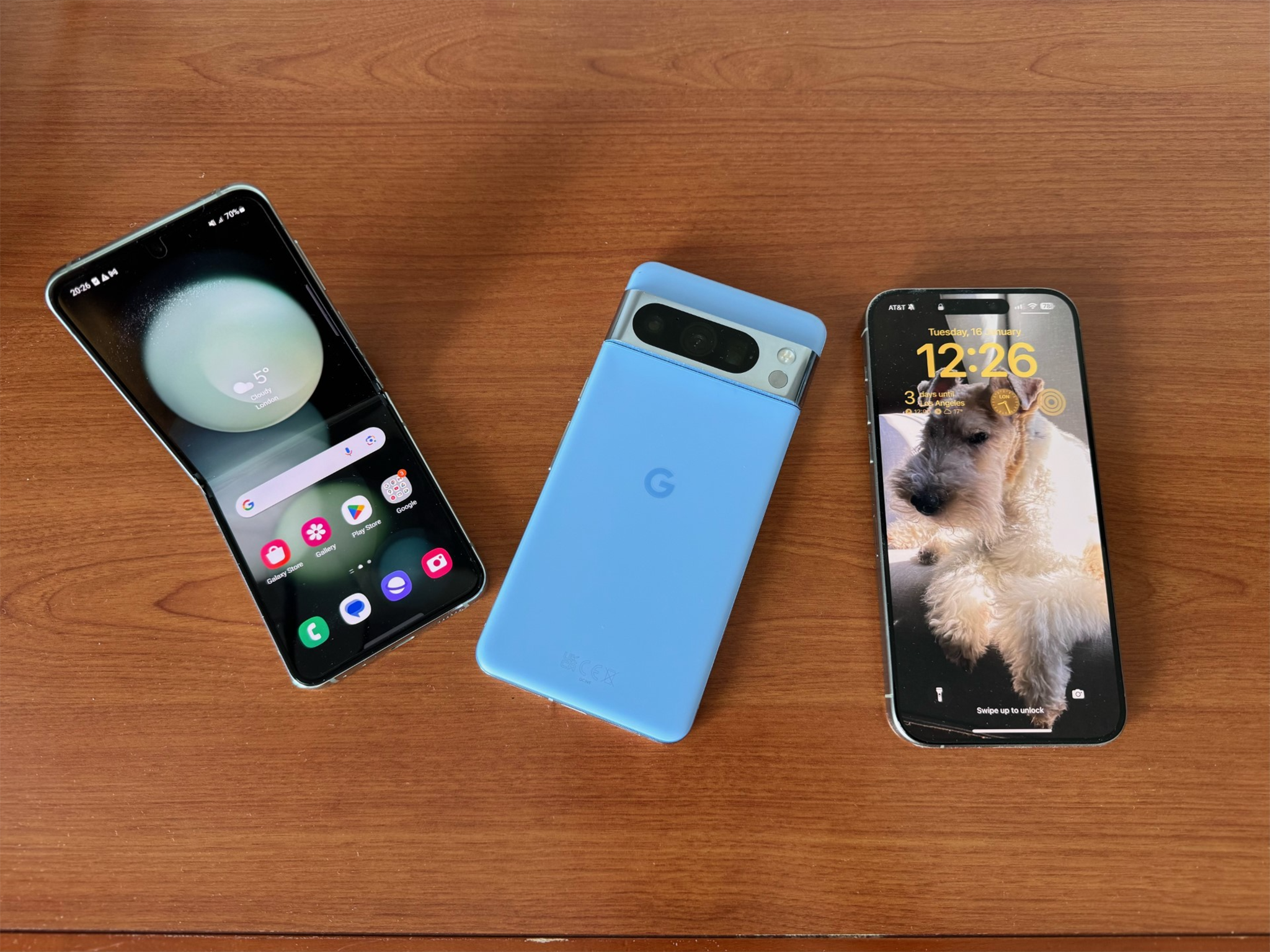
Ease of setup, simplicity of use, and performance with everyday apps have been tested to the full. Cameras have been tested in different lighting situations, putting their flagship features to the test for stills and video.
We studied how the screen performs: is it effective when you’re watching video, fast enough for playing games or smooth when you’re scrolling through menus? Is the phone solid and reliable, and will it continue receiving software and security updates for years? And how well does the battery perform?
The best phones for 2024 are:
- Best overall – iPhone 16 Pro: £999, Amazon.co.uk
- Best Android phone – Pixel 9 Pro: £999, Amazon.co.uk
- Best Samsung phone – Galaxy S24 Ultra: £767, Amazon.co.uk
- Best cheap phone – Pixel 8a: £499, Amazon.co.uk
- Best flip phone – Galaxy Z Flip 6: £949, Amazon.co.uk
iPhone 16 Pro

- Best: Overall
- Screen size: 6.3in
- Screen type: 120Hz OLED
- Dimensions: 149.6mm x 71.5mm x 8.3mm
- Weight: 199g
- Storage: 128GB, 256GB, 512GB, 1TB
- RAM: 8GB
- Rear cameras: 48MP main, 48MP ultrawide, 12MP telephoto
- Selfie camera: 12MP
- Why we love it
- Great photography features
- Beautiful design
- Take note
- Still waiting on Apple Intelligence
The harshest criticism you could level at the iPhone 16 Pro is that it’s hardly changed since last year’s phone, with just a few modest improvements keeping it the best phone you can buy right now.
Design-wise, you’d struggle to spot any differences here, apart from the new camera control button on the frame. But under the hood, the newest iPhone gets improved lenses, a host of photography and video shooting options, and naturally better performance thanks to the A18 Pro chip. The much-touted Apple Intelligence features have yet to launch, but with a planned release date in December, the AI overhaul of iOS looks set to give the iPhone 16 range its biggest upgrade over last year’s phones.
In our iPhone 16 Pro and iPhone 16 Pro Max review, our tester called the phones “the most powerful, practical and professional smartphones on the market. Even without the promise of new capabilities, they would be the peak of what is available.”
Read the full iPhone 16 Pro review now
- iPhone 16 Pro with 100GB data: £44.99 per month, £59 up front, Mobiles.co.uk
Pixel 9 Pro
- Best: Android phone
- Screen size: 6.3in
- Screen type: 120Hz OLED
- Dimensions: 152.8mm x 72mm x 8.5mm
- Weight: 199g
- Storage: 128GB, 256GB, 512GB, 1TB
- RAM: 16GB
- Rear cameras: 50MP main, 48MP ultrawide, 48MP telescope
- Selfie camera: 42MP
- Why we love it
- Slick, clean Android experience
- Superb cameras
- Great AI features
The newest phone in the Pixel range is Google’s best yet, boasting a genuinely useful set of artificial intelligence features that are constantly expanding and improving. Like the rest of the Pixel 9 range, the Pro and Pro XL phones enable advanced photo editing tools, near-instant transcription or formatting of meeting notes, the ability to summarise your phone calls and intelligently recall information from screenshots you’ve taken.
In our Pixel 9 Pro XL review, our tester said the phones “are the first to take advantage of artificial intelligence in a way that doesn’t feel trivial. Gemini is definitely still a work in progress, and while it’s not reliable enough that you’d trust it to run your business, the AI model’s rapidly evolving ability to integrate with more and more Google apps means it can respond with meaningful and useful answers.”
Artificial intelligence tricks aside, the Pixel 9 Pro is an incredibly well-built and good-looking piece of tech, and features one of the best cameras of any smartphone. The triple-lens array includes a powerful telephoto lens. The selfie camera gets a massive upgrade over last year’s Pixel. Post-processing tools like ‘video boost’ can run your videos through Google’s cloud servers to re-render and enhance them with impressive results, retrieving detail in low light and upscaling things to 8K.
“All this on top of the best and slickest Android experience you can find, plus seven years of software updates, security and support,” said our tester. “The Pixel 9 Pro XL is naturally the best phone Google’s ever made, and certainly the most interesting new phone in recent memory.”
Read the full Pixel 9 Pro XL review
- Pixel 9 Pro with 250GB data: £35 per month, £205 up front, E2save.com
Samsung Galaxy S24 Ultra
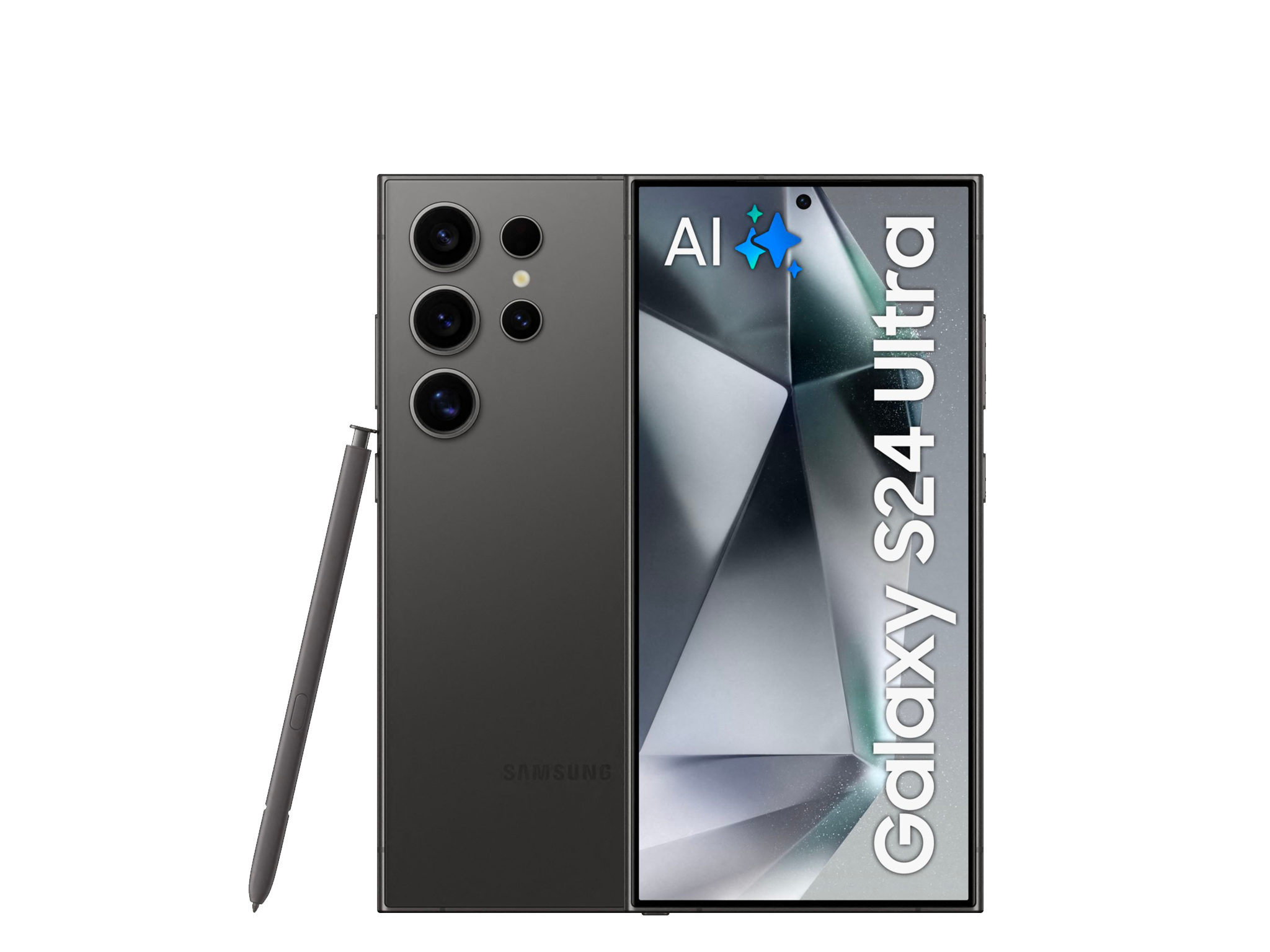
- Best: Samsung phone
- Screen size: 6.8in
- Screen type: 120Hz OLED
- Dimensions: 162.3mm x 79mm x 8.6mm
- Weight: 232g
- Storage: 256GB, 512GB, 1TB
- RAM: 12GB
- Rear cameras: 200MP main, 12MP ultrawide, 10MP telephoto, 50MP telephoto
- Selfie camera: 12MP
- Why we love it
- Great AI features
- Strong cameras
- Take note
- Too big for some hands
The latest Galaxy is tremendous. The design is similar to the S23 Ultra but the new phone has a titanium chassis, which looks great in a satin finish, while more rounded edges make it a more comfortable fit in the hand.
One of the two telephoto cameras has been upgraded: although the zoom equivalent has dropped from 10x the main camera to a frankly more useful 5x, but the resolution of the sensor has leapt to 50MP.
For all that, the big news on this phone is the implementation of artificial intelligence. It claims to improve photography, especially in lower light, for a start. And it adds features such as a smart Transcription Assist capability to make it easy to capture the minutes of a meeting, for instance. Best of all, a live translation option means you can make a phone call to someone in a language you don’t speak, as you’ll hear a spoken translation almost in real time. A real success.
Read the full Galaxy S24 Ultra review
- Galaxy S24 Ultra with unlimited data: £47 per month, £39 up front, Fonehouse.co.uk
iPhone 16
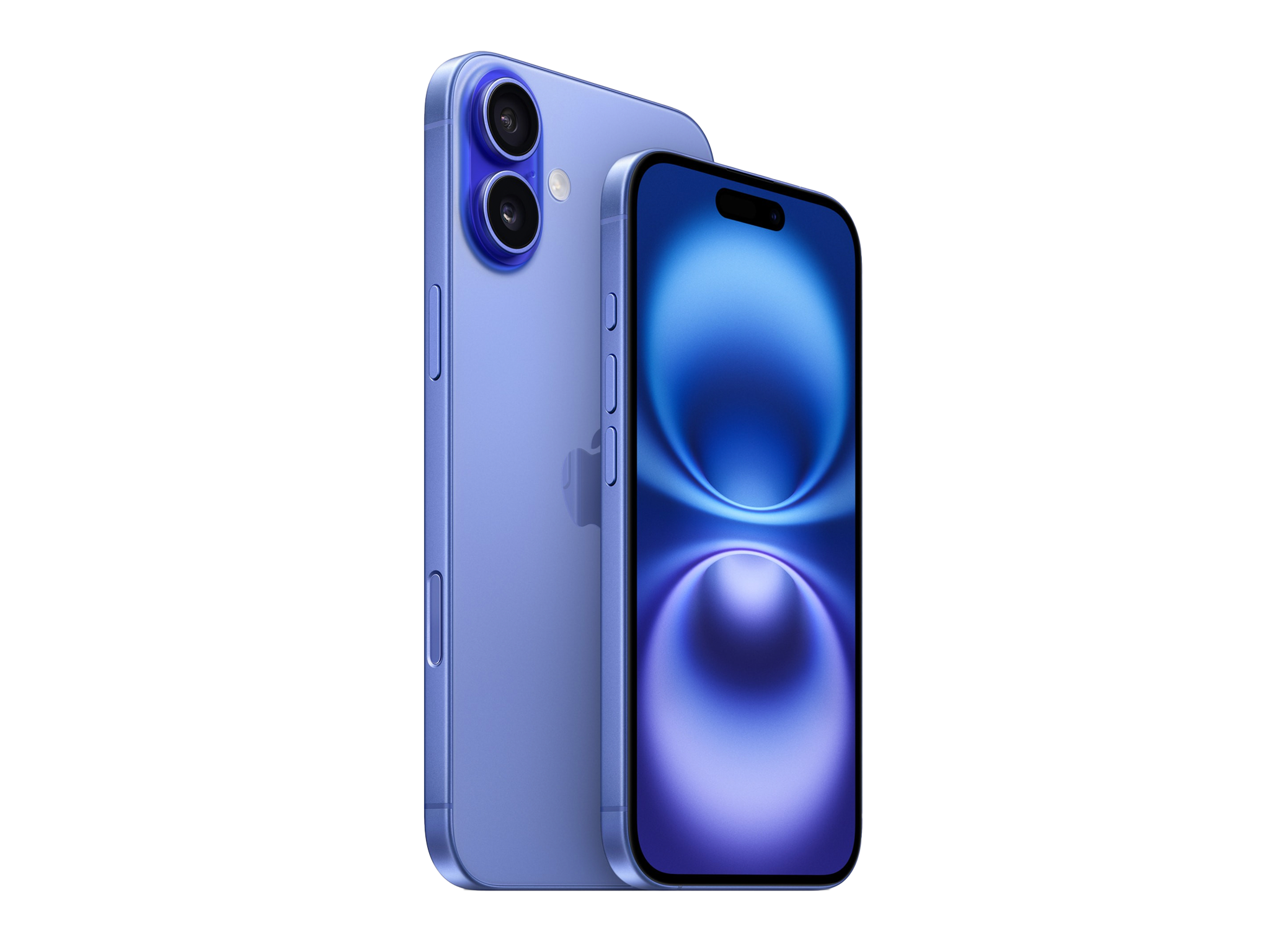
- Best: Affordable iPhone
- Screen size: 6.1in
- Screen type: 60Hz OLED
- Dimensions: 147.6mm x 71.6mm x 7.8mm
- Weight: 170g
- Storage: 128GB, 256GB, 512GB
- RAM: 8GB
- Rear cameras: 48MP main, 12MP ultrawide
- Selfie camera: 12MP
- Why we love it
- Zippy A18 chip
- Excellent cameras
- Almost as good as the Pro this year
- Take note
- 60Hz display
Apple has made it harder than ever to choose between the entry-level iPhone and the Pro edition. This year’s base iPhone 16 gets the new A18 chip rather than using the chip from last year’s Pro phones, giving it speedy all-round performance. It comes in £200 cheaper than the iPhone 16 Pro by ditching the more expensive phone’s telephoto lens and using a lower quality 60Hz display. If you don’t think you’ll notice those differences, the iPhone 16 is the phone for you.
Otherwise, you’re getting the same upgrades that appear in the rest of the iPhone 16 range: new camera controls, the ability to run Apple Intelligence when it’s made available, faster wireless charging and a toughened glass screen. In our iPhone 16 and iPhone 16 Plus review, our tester was “impressed by how much closer the regular iPhone now is to the pricier Pro models. Sure, the Pro has an extra camera, a better and bigger screen and more, but feature after feature that you might have expected to be Pro-only is on the iPhone 16.”
Read the full iPhone 16 review
- iPhone 16 with unlimited data: £33 per month, £319 up front, Carphonewarehouse.com
Pixel 8a
- Best: Cheap phone
- Screen size: 6.1in
- Screen type: 120Hz OLED
- Dimensions: 152.1mm x 72.7mm x 8.9mm
- Weight: 188g
- Storage: 128GB, 256GB
- RAM: 8GB
- Rear cameras: 64MP main, 12MP ultrawide
- Selfie camera: 13MP
- Why we love it
- Gets all the best Pixel 8 features
- Affordable
- Great cameras and display
- Take note
- The regular Pixel 8 is often on sale at this price
The a-series of Pixel phones are colourful and budget-friendly alternatives to the main series models, and tend to launch half a year after the flagship devices. The Pixel 8a is the newest in the series and sailed into our round-up of the best cheap phones of 2024 (though at £499 it’s far from the cheapest).
If you want all of the interesting photo editing features of the Pixel 8 series and that slick and seamless Android interface, but don’t want to spend too much, it offers everything you might need in a more affordable package. You get fun Pixel features like ‘magic editor’, which removes objects and people from your pictures, and more practical ones like ‘live translate’, which acts as a live interpreter between two people speaking different languages.
In our review of the Pixel 8a, our tester was impressed by the phone’s “seven years of support and updates, genuinely useful AI features, secure face unlock and 120Hz display, which is a rarity at this price point. The Pixel 8a is one of the best budget phones you can buy.”
- Pixel 8a with unlimited data: £22.99 per month, £59 up front, Mobiles.co.uk
Samsung Galaxy Z Flip 6
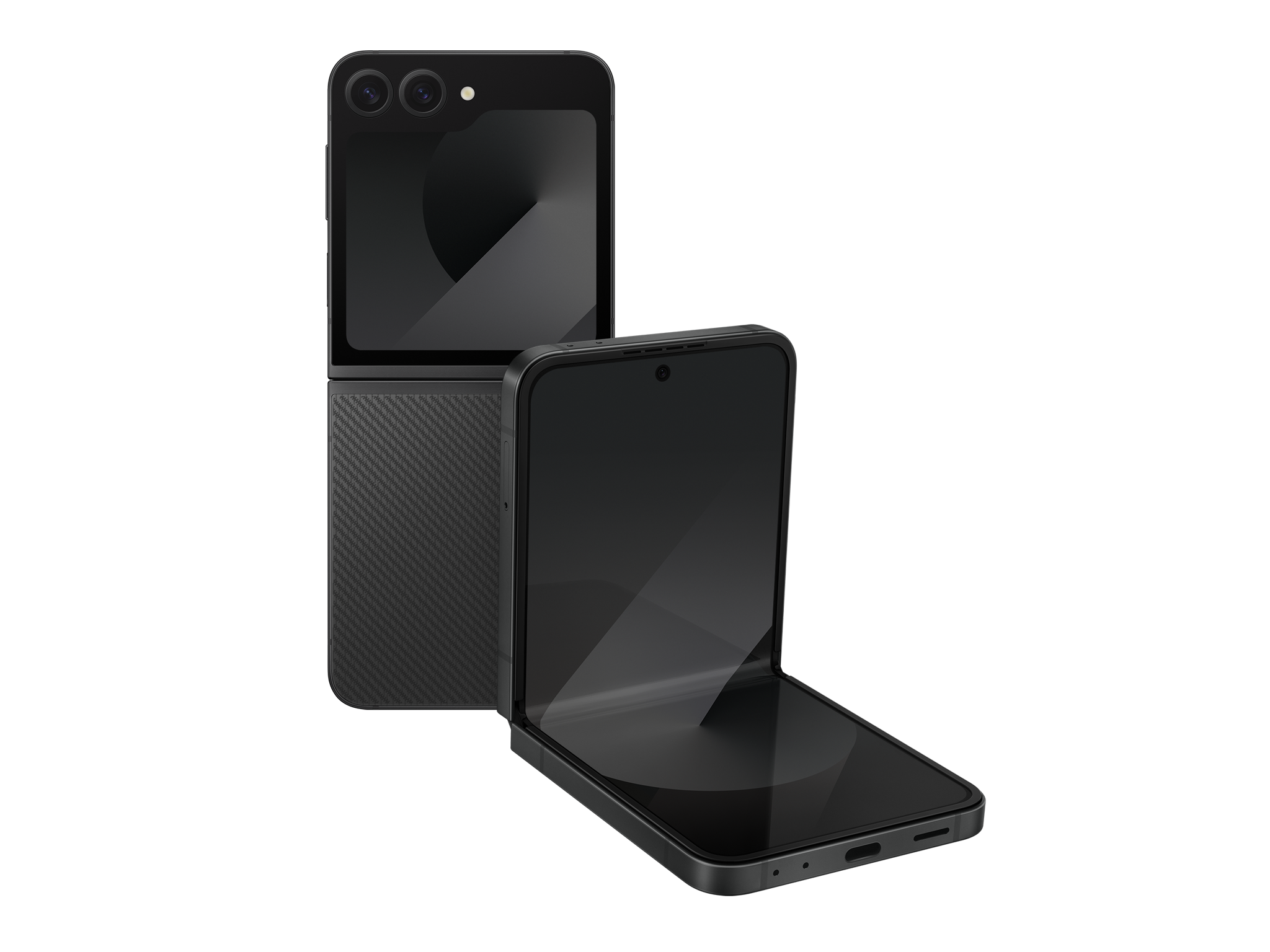
- Best: Flip-style folding phone
- Screen size: 6.7in (unfolded) / 3.4in (folded)
- Screen type: 120Hz OLED
- Dimensions: 165.1mm x 71.9mm x 6.9mm (unfolded) / 85.1mm x 71.9mm x 14.9mm (folded)
- Weight: 187g
- Storage: 256GB, 512GB
- RAM: 12GB
- Rear cameras: 50MP main, 12MP ultrawide
- Selfie camera: 10MP
- Why we love it
- Sturdy, flexible, hinged design
- Outer display gets fun new widgets
Samsung’s clamshell-style foldable is one of the coolest looking phones you can buy, with a head-turning design that folds down to a size not much bigger than a cream cracker.
This year’s Galaxy Z Flip 6 saw a big upgrade to battery life, performance and cameras, which were lacking in last year’s version, and tweaks the build slightly to give the frame flatter edges that snap together neatly when closed. Small enough to be used one-handed, it features a 3.4in outer display to see your notifications, check the weather and even reply to messages without having to open the phone. Inside, the tall 6.7in display is perfect for vertical scrolling, and by angling the phone half-open you can frame selfies without needing to prop your phone up against a wall.
In our Galaxy Z Flip 6 review, our tester called it “an incredible piece of hardware. This year’s Galaxy Z Flip might look the same but is the culmination of continuous advancements to the popular flip-phone’s design, the hinge, the durability and the outer screen. Unsurprisingly, it’s probably the best folding phone you can buy today.”
Read the full Galaxy Z Flip 6 review
- Galaxy Z Flip 6 with unlimited data: £40 per month, nothing up front, Fonehouse.co.uk
Pixel 9 Pro Fold
- Best: Folding phone
- Screen size: 8in (unfolded) / 6.3in (folded)
- Screen type: 120Hz OLED
- Dimensions: 155.2mm x 150.2mm x 5.1mm (unfolded) / 155.2mm x 77.1mm x 10.5mm (folded)
- Weight: 257g
- Storage: 256GB, 512GB
- RAM: 16GB
- Rear cameras: 48MP main, 10.5MP ultrawide, 10.8MP telephoto
- Selfie camera: 10MP
- Why we love it
- The size of a normal phone when folded
- App compatibility much improved
- Inner screen is bright, immersive and vibrant
- Take note
- Expensive
Google’s second foldable launched in September and became the best folding phone in this niche smartphone category, with only the OnePlus Open and the Samsung Galaxy Z Fold 6 offering much in the way of competition.
We prefer the Pixel 9 Pro Fold to Samsung’s foldable for the simple reason that it’s roughly the same size and shape as the regular Pixel 9 Pro when closed, meaning you can use the outer display like a normal phone rather than having the interface squished into the tall and narrow form factor of the Samsung rival. It’s thin for a foldable too, just about fitting into a pocket comfortably, and it feels comparable in thickness and weight to the Pixel 9 Pro XL with a case on.
Android runs beautifully on a folding display. When apps make use of the extra space you get useful side menus – Gmail lets you view emails while keeping your inbox visible, for example – while apps that aren’t designed for the bigger screen are automatically adapted to fill the space neatly (with some ugly exceptions every now and then).
In our Pixel 9 Pro Fold review, our tester rated the phone for its speed and AI features. “Unlike the original Pixel Fold, this year’s foldable Pixel runs on the same Tensor processor as the mainline Pixel 9 phones, so it feels fast and responsive. You also get all of those Pixel 9 exclusive benefits of Gemini AI built in, such as the Pixel Studio and Pixel Screenshots apps.”
Read the full Pixel 9 Pro Fold review
- Pixel 9 Pro Fold with 250GB data: £60 per month, £260 up front, Mobiles.co.uk
Nothing Phone (2)
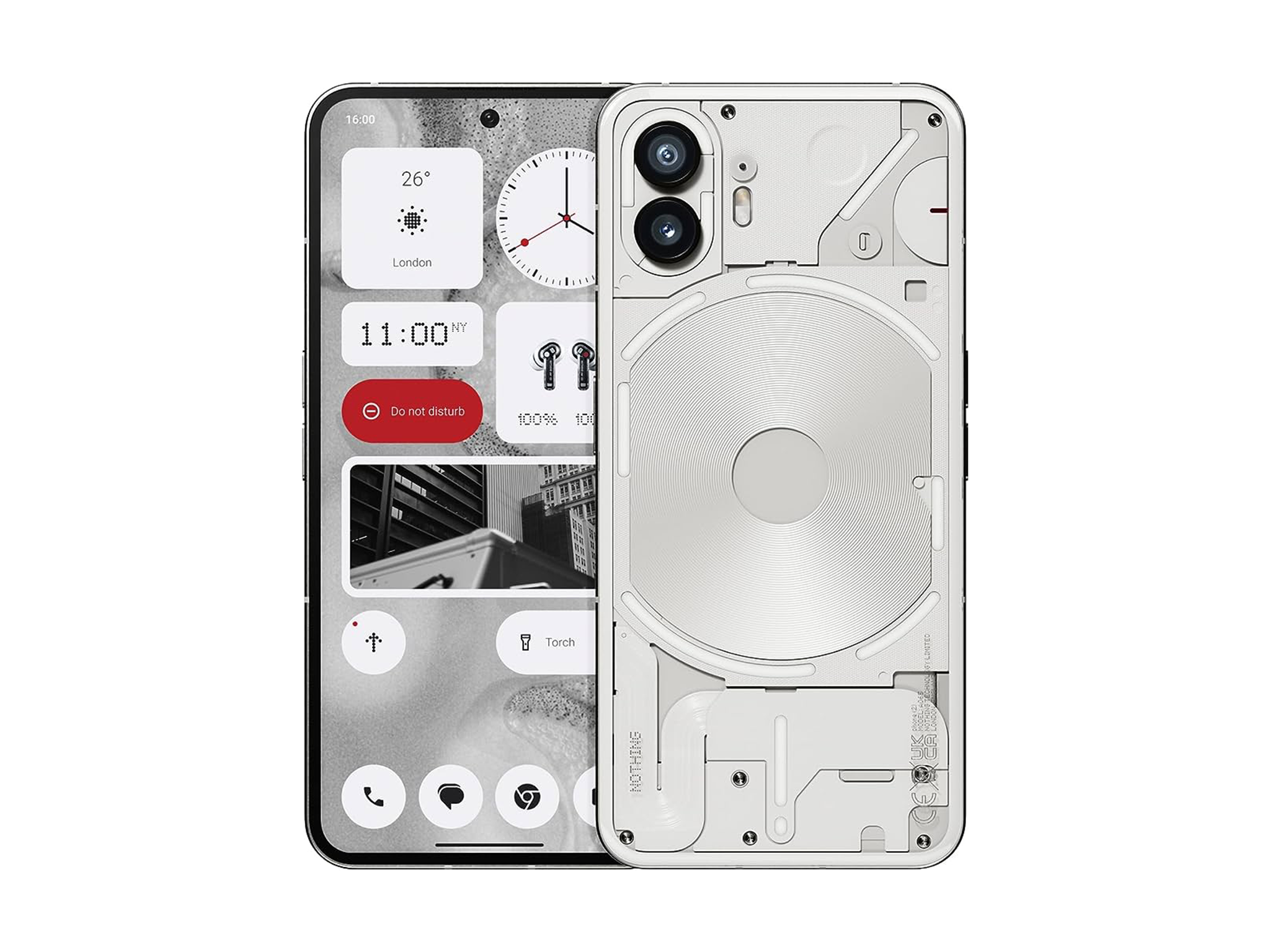
- Best: Phone for innovation
- Screen size: 6.7in
- Screen type: 120Hz OLED
- Dimensions: 162.1mm x 76.4mm x 8.6mm
- Weight: 201.2g
- Storage: 128GB, 256GB, 512GB
- RAM: 8GB, 12GB
- Rear cameras: 50MP main, 50MP ultrawide
- Selfie camera: 32MP
- Why we love it
- Quirky interface
- Slick design with rear lights
- Good cameras
- Take note
- Processor isn’t the latest
Nothing is the brainchild of Carl Pei, co-founder of OnePlus. He brings to the new brand a determination to create technology that’s different and fun. And it really is, thanks to the transparent back that enables you to see where components such as the wireless charging coil sit.
The back is also filled with LEDs that light up in different patterns – so you can see who’s calling without turning over the phone. You can even use this system to show how far away your Uber is, as the LED lights count down. It’s an Android phone but Nothing’s clever overlay looks funky and enticing. Much of it is monochrome, which looks splendid and is designed so as not to draw you into using your phone endlessly. The two rear cameras have 50MP resolution and are good if not quite a match for some other phones in our list.
Read the full Nothing Phone (2) review
- Nothing Phone (2) with 100GB data: £19.99 per month, £79 up front, Carphonewarehouse.com
The verdict: Phones
The latest phones offer powerful performance, sharp cameras and long-lasting battery life. The iPhone 16 Pro is the best iPhone yet, with outstanding cameras, new photography controls and a premium design.
Over on Android, the Google Pixel 9 Pro is the best argument yet for ditching Apple, with exceptional styling, brilliant cameras and genuinely innovative AI features embedded throughout.
Protect your new smartphone with the best iPhone 16 phone cases
